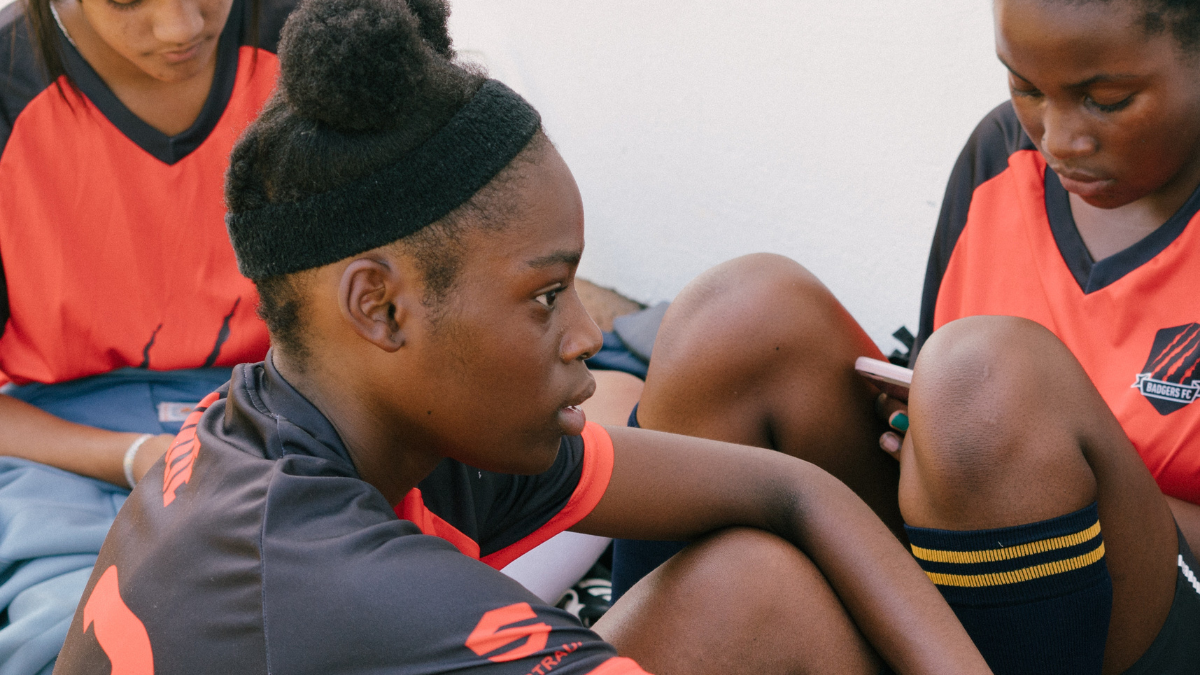With honourable, progressive goals in mind, brands are falling into the trap of using ‘he-peating’ as a way to get people to care about women’s issues. But in doing so, brands fundamentally undermine their own goal, and miss out on the opportunity to let women tell their own stories.
Les Blues, Less Women
This year’s Women’s World Cup was the biggest ever. In the wake of a massive Euros, and a huge surge of people being drawn into the game, it was truly a new height for sport. And women’s sport in particular. Set to be a huge spectacle, how did France decide to rally support behind the national team?
By mapping men’s faces onto the players.
Now I should say from the outset, this was a highly popular campaign and was very well received online, making a huge splash. But isn’t it interesting that the best way they could think of getting people to care about women’s football achievements, was to make them… um… not women.
Annoyingly, he-peating probably does work
Now this is a phenomenon well known to women, and incredibly eloquently researched by Mary Anne Sieghart in her book The Authority Gap (2022). Women are more than twice as likely as men as needing to provide evidence of their competence, and women of colour are as twice as likely as white women.
As women we need to back up our claims, to give more evidence, more context, more clarity, we’re much more likely to be interrupted, and very unlikely to do the interrupting. It’s a constant game of being loud enough and staunch enough to be heard, without being ‘bossy’.
It’s a systemic care-gap
It’s not just the launch of the Women’s World Cup that seeks proof for women’s statements in men, in fact, the thing that got me noticing this he-peating trend was a set of LinkedIn posts of men hooked up to period pain simulators. ‘Wow’ (I didn’t think) ‘now a man’s in pain, I can understand these hysterical women may actually be telling the truth about the level of pain’…
The recent Heineken campaign falls into the same trap. Jill Scott and Gary Neville swapped Twitter (or should I say ‘X’) accounts, and Neville reported back surprise at the hate received. Again, a hugely important thing to be focussing on. But time and again women talk out about the hate, threats and abuse they experience online. But it’s only when a man swaps in that we believe it and care?
The point is, if we care about what Sieghart says (which we should) it’s most likely a fairly effective way to communicate a message. The Oranges Les Blues scored 4.7 stars for sports fans on System1’s research — which is a high effectiveness potential. But when we use men as evidence of women’s claims, we fundamentally buy into a system that doubts and diminishes women.
It’s about more than advertising, it’s about women being valued
The importance of this extends beyond advertising. It extends into the workplace, where we still see a stalling lack of diversity in senior positions. It extends into our social lives, where we see women interrupted and less likely to be listened to. It extends into health, where women’s pain is frequently diminished and ignored.
Let our stories be cared about in their own right
Often for laudable and progressive ends, brands are using this tool to do ‘gotcha’ moments — using men to ‘prove’ women right. But in the context of women’s believability (or lack thereof) and the serious impact it has on our authority and ability to be taken seriously — this massively misses the mark.
Featured image: RF studio / Pexels


